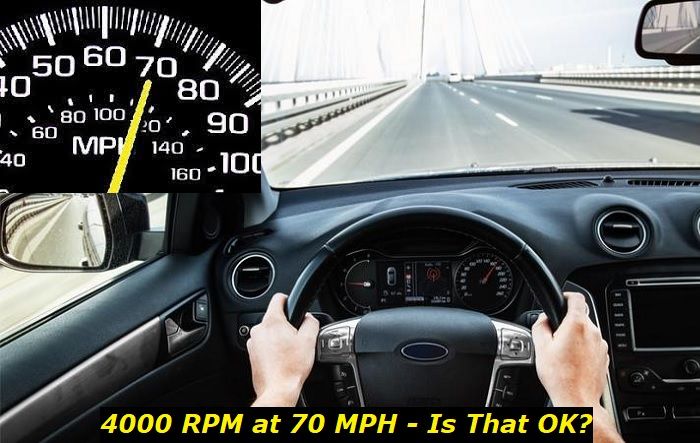In 2022, Buick released a refreshed Enclave of the second generation making a facelift and significantly changing the design of the exterior. The engine is still used the same - the 3.6L V6 powerplant with a lot of respect from American buyers. But is this respect actually justified? This is what I'm going to try and figure out in this article.
Today, I will tell you about the 3.6L V6 engine in the new Buick Enclave and will outline its common problems, advantages, and some hidden facts that you should know. This will obviously help you weigh in all pros and cons before you decide to buy this vehicle and will help you avoid any disappointment after several years of driving the SUV.

Key facts and my opinion about the engine
- Production years: 2018-2024
- Average lifespan of LFY: 200,000-220,000 miles
- Fuel supply type: direct injection
- Power range: 310 hp
- Fuel efficiency: bad
- Engine block material: aluminum
- Engine reliability score: medium
- The most common problems: chain tensioner issues, carbon buildup on intake valves, coolant leaks.
Key features of the Buick Enclave 3.6L V6 engine
The engine in the Buick Enclave is codenamed LFY and it's basically the same engine that was used in the previous generation of the Enclave but with some significant changes in the head design and addressed common problems.
So, the General Motors High Feature 3.6L V6 engine in the Buick Enclave is a very well-known engine that was used in the Chevy Traverse and its sibling without the start-stop technology was also used in the Camaro, old Equinox, some Cadillacs, Buick LaCrosse and over a dozen of different cars manufactures and sold all around the globe.
Here are some key features of this engine:
- this is a non-turbocharged 3.6L V6 gasoline engine offering 310 horsepower and 266 lb-ft of torque which is not bad for the Enclave;
- the engine has an updated start-stop system and also an improved airflow to make it more efficient than older 3.6L V6 models;
- the engine has a direct injection system, it features an aluminum head and block;
- the timing system is driven by the chain, also the engine has VVT valve timing on the intake and exhaust camshafts;
- the engine is equipped with the nine-speed automatic transmission (9T65) developed by GM - a pretty good and reliable unit;
- when it comes to fuel efficiency, the LFY engine can go about 18 MPG in the city and 26 MPG on highways.
In terms of gas mileage, I would say it's not really good if you compare it with the mileage of modern turbocharged engines with smaller displacement. And maybe Buick should have thought about using one of them in the refreshed Enclave. But the 3.6L V6 is a legendary engine that seems to be much more reliable.
Anyway, the engine has undergone at least one recall campaign - the service bulletin 19-NA-256. It says that this engine may rattle, knock, squeak, or squeal and recommends replacing the entire engine. Of course, this is done completely free for you but only if these symptoms are presented in the engine.
How many miles will the 3.6L V6 last in the Enclave?
Well, if your engine doesn't rattle and squeak as described in the service bulletin for the recall campaign, it will live quite a long and happy life. Also, maintenance and proper repair are extremely important. You should know that the engine just can't live long enough if you keep changing the oil too rarely.
The overall average longevity of 3.6L V6 LFY engines in the Enclave should be about 220,000 miles. Some owners will squeeze more out of their V6s but some will need to replace or rebuild the engine much earlier than that.
Although the 3.6L V6 may seem like a bulletproof engine thanks to its 6 cylinders, great displacement, and zero super-modern technologies, it's not exactly that good. It can fail and it has some very weak technologies inside that may kill it much earlier than you think.
When it comes to the transmission, the 9-speed automatic transmission can live quite a long time. But at about 150,000 miles, it may require some repair procedures. For about $1,500 to $2,000, you will be able to return your transmission back to life. So, I suppose, this transmission is ready to live as long as the engine with just one repair during its lifetime.
What are the problems with the 3.6L V6 engine in the Enclave?
Although the engine still seems to be a good choice, I can't help but make a list of weak points that you should know about. Please don't take these disadvantages as pure criticism of the engine - I'm trying to focus on its problems right now to help you make a better choice. This doesn't mean that the V6 engine in the Enclave doesn't have any advantages.
So, let's see which common issues you may encounter in the 3.6L engine under the hood of the Enclave:
1. The chain tensioner may fail too early
Poor lubrication makes this chain tensioner go bad much earlier than the chain may require replacement. But if you are replacing the tensioner at about 70,000 miles, you should also replace the chain. Be ready that in another 70K miles, the engine will require one more chain and tensioner change.
In most cases, bad lubrication is the culprit of the chain problems. So, one of the key recommendations is to change the oil in this engine about twice earlier than the driver's manual says.
2. Carbon buildup problems
This is a pure direct injection engine, so it doesn't have any port injectors to save it from carbon buildup. This means that every 30,000 miles or so you will need to have the intake valves and injectors cleaned. One bad thing is that the procedure is quite expensive. If done in the dealership, it will cost you a fortune!
You can't do anything with this problem - this is a common issue for all direct-injection engines.
3. Coolant leaks and overheating
I don't know why but I've found literally dozens of reports about radiator leakages. When radiators start leaking, the coolant level may drop too low and the 3.6L V6 engine may start overheating.
These engines are very sensitive to overheating, so I recommend regularly checking the coolant level and addressing any leaks that you reveal in your car. Otherwise, sudden overheating may kill one of the heads.
4. Sudden knocking and rattling
This condition may be caused by the failure of the main bearing rod bearings. And if you hear any rattling, knocking, or squeaking from the bottom part of the engine, or you experience a seized engine, you should immediately go to the dealership and ask them to check if the engine can go under the 19-NA-256 bulletin.
If the rod bearing or the main bearing is affected, your engine will be replaced with a new one free of charge.
5. Gas mileage problems
This is not the most economical engine I've seen in my life. It will drink up all the fuel from the tank and ask for more before you can imagine. The claimed 18 MPG gas mileage in the city traffic seems unreal. In average city conditions, the car will go about 15 MPG and if you press the pedal hard for quick acceleration, the fuel consumption will go even worse.
But if you notice that even when driving calmly and carefully the engine burns too much fuel, the problem may be in the injection system, ignition, or carbon buildup. Pay attention to some other symptoms and decide whether you need to repair the car.
How can you prolong the life of the V6 engine in the new Enclave?
Well, it's not that hard to ensure that the engine in your Buick Enclave is healthy and happy. You will need to do the following:
- change oil twice more often than the manufacturer recommends - I would do this every 5,000 miles if I had the Enclave;
- avoid overheating at all costs and check the coolant level, don't ignore coolant leaks and any other leaks;
- driving aggressively is not an option given the pretty weak main bearing and rod bearings in this engine;
- warning lights and error codes shouldn't be ignored - this is one of the reasons for fatal engine failures when drivers ignore these signs of problems.
But other than that, you will not have to do anything special to get your V6 engine in the new Enclave to 220,000 miles and even beyond that.
You may see that modern V6 engines with great displacement are not bulletproof anymore. They still have a lot of ecological equipment and some new features that make them less durable. So, don't hope your Enclave engine is going to live forever. But if you respect and know about its common problems, you can rely on it for a very long time.
About the authors
The CarAraC research team is composed of seasoned auto mechanics and automotive industry professionals, including individuals with advanced degrees and certifications in their field. Our team members boast prestigious credentials, reflecting their extensive knowledge and skills. These qualifications include: IMI: Institute of the Motor Industry, ASE-Certified Master Automobile Technicians; Coventry University, Graduate of MA in Automotive Journalism; Politecnico di Torino, Italy, MS Automotive Engineering; Ss. Cyril and Methodius University in Skopje, Mechanical University in Skopje; TOC Automotive College; DHA Suffa University, Department of Mechanical Engineering






Add comment